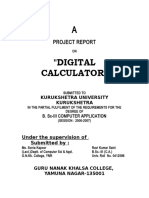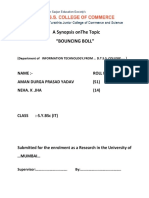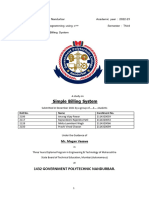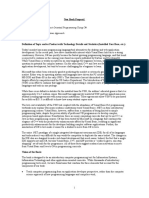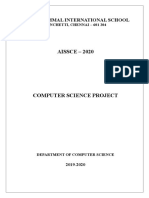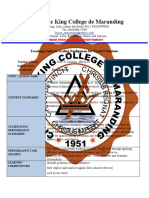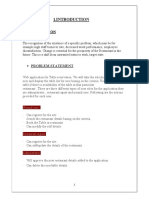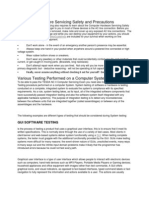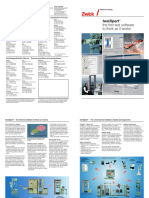0% found this document useful (0 votes)
166 views12 pagesIntroduction of C++ and Calculator
This document summarizes an object-oriented programming project to develop a simplified calculator using C++. The project was completed by a group of students and advised by Ivy Miel Jamero. The calculator aims to provide a user-friendly interface for basic arithmetic operations, leveraging the C++ programming language in the Visual Studio integrated development environment. The project objectives are to design an efficient tool for mathematical computations and to teach students how to create a calculator program. The scope is limited to basic arithmetic and the interface may vary across operating systems, with accuracy limited by floating-point arithmetic.
Uploaded by
Jerson CatadmanCopyright
© © All Rights Reserved
We take content rights seriously. If you suspect this is your content, claim it here.
Available Formats
Download as DOCX, PDF, TXT or read online on Scribd
0% found this document useful (0 votes)
166 views12 pagesIntroduction of C++ and Calculator
This document summarizes an object-oriented programming project to develop a simplified calculator using C++. The project was completed by a group of students and advised by Ivy Miel Jamero. The calculator aims to provide a user-friendly interface for basic arithmetic operations, leveraging the C++ programming language in the Visual Studio integrated development environment. The project objectives are to design an efficient tool for mathematical computations and to teach students how to create a calculator program. The scope is limited to basic arithmetic and the interface may vary across operating systems, with accuracy limited by floating-point arithmetic.
Uploaded by
Jerson CatadmanCopyright
© © All Rights Reserved
We take content rights seriously. If you suspect this is your content, claim it here.
Available Formats
Download as DOCX, PDF, TXT or read online on Scribd
/ 12
